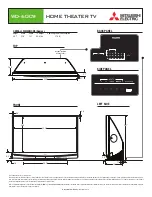
1.3 Characteristics
31
7SD5 Manual
C53000-G1176-C169-1
• Verification of the synchronous conditions or de-energized state also possible
before the manual closing of the circuit breaker, with separate limit values
• Also measurement via transformer
• Measuring voltages optionally phase-phase or phase-earth
Voltage Protection
(optional)
• Two overvoltage stages for the phase-earth voltages
• Two overvoltage stages for the phase-phase voltages
• Two overvoltage stages for the positive sequence voltage, optionally with com-
pounding
• Two overvoltage stages for the negative sequence voltage
• Two overvoltage stages for the zero sequence voltage or any other single-phase
voltage
• Settable dropout to pickup ratios for the overvoltage protection functions
• Two undervoltage stages for the phase-earth voltages
• Two undervoltage stages for the phase-phase voltages
• Two undervoltage stages for the negative sequence voltage;
• Settable current criterion for undervoltage protection functions
Frequency
Protection
(optional)
• Monitoring for underfrequency (f<) and/or overfrequency (f>) with 4 frequency limits
and delay times that are independently adjustable
• Particularly insensitive to harmonics and abrupt phase angle changes
• Large frequency range (approx. 25 Hz to 70 Hz)
Fault Locator
• Optionally single-ended (conventional) or double-ended fault location via communi-
cation interfaces
• Initiated by trip command or reset of the fault detection
• Fault location output in Ohm, kilometers or miles and % of line length
• Output of the fault location also possible in BCD code
• Parallel line compensation can be selected
• Taking into consideration the load current in case of single-phase earth faults fed
from both sides (configurable)
• Possibility to take into account line asymmetry and of different line sections
Circuit Breaker
Failure Protection
• With definite time current stages for monitoring current flow through every pole of
the circuit breaker
• With definite time monitoring time steps for single-pole and three-pole tripping
• Start by trip command of every internal protection function
• Start by external trip functions possible
• Single-stage or two-stage
• Short dropout and overshoot times
• End fault protection and pole discrepancy monitoring possible
www
. ElectricalPartManuals
. com
















































